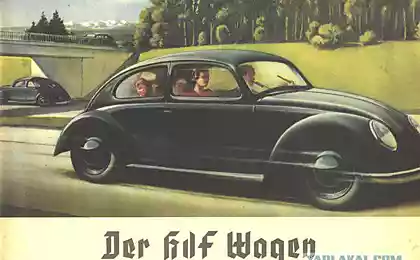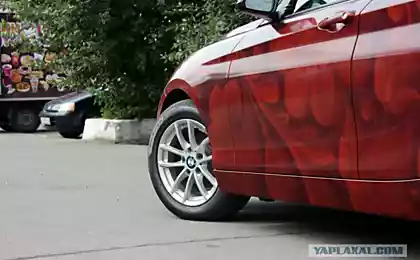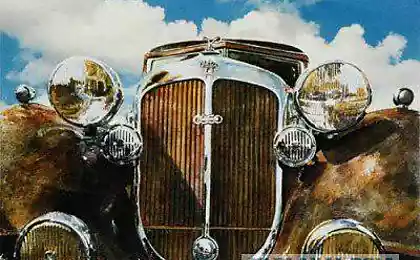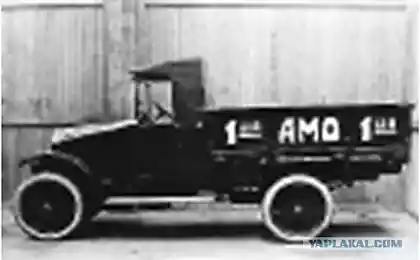607
Driving a car: how to use time
A few years ago I calculated how much I spend time in the car for a month, I had a slight shock: I got almost 30 hours, i.e. more than a day or more Crescent a year!
And that's not enough, because we don't have in big city traffic where I usually ride. And where there tube significant people spend in the car every year a full month, and sometimes more!
Think about this figure, more uncontrolled and quite useless for the development of time, about 3.5 months, you spend only in a dream (in fact the sleep time you can spend with greater benefit, but more on that later)!
A reasonable question arises — how can the maximum benefit and minimum harm this time to take? As good judgment old Castaneda: "We either make ourselves strong or miserable, the amount of effort (and, I would add, time) are the same."
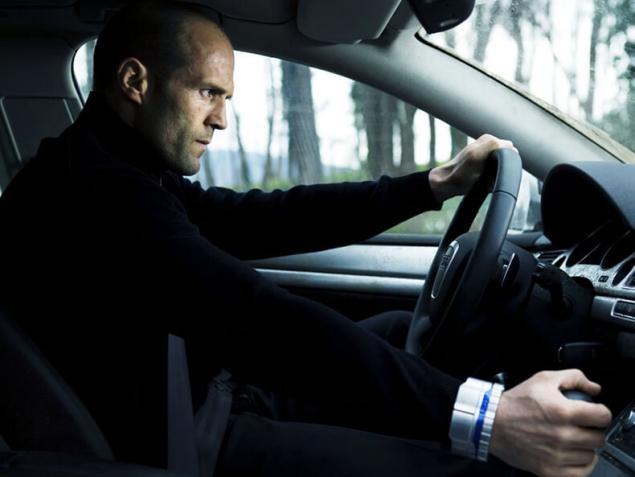
Let's see how you can actually make yourself stronger when you are driving a car.
Driving listening to moronic and vulgar radio show clearly not become stronger, faster rather devolving, so the first recommendation is simple.
1. Listen to behind the wheel of useful audio through the car stereo, phone, player, etc. With the development of Internet and digital audio has become very easy to make yourself and regularly listen to a really useful collection.
I just want to warn you that this and the following guidelines are intended for drivers with a certain experience and driving experience. When basic skills are already "written in the subcortex", the car is found without stress and you can see the part of consciousness to the perception of new information.
So what, in my opinion, applies to useful records?
1.1. Your own audio Is a different clear statement of goals, desires, and promptings, and the program itself, often called affirmations.
Proven that it is best perceived and recorded at the subcortical recording team made their own voice. Well, dictate and create your own audio file from your own useful auto suggestions. You can also apply them to relaxing music.
Thus it is better to write sentences in the present tense and avoid negatives (e.g., particles "no", "no", "never"). Where it is possible to specify a specific date for the implementation of the goal.
For example, the two options "I never get sick" and "I am always healthy" – better to use the second. Or, in the case about the present, not "I'm going to travel a lot!", and "I travel a lot!"
Other possible options:
1. I go to a certain income by a certain year...
2. I'm a lucky man, I would do...
3. I am a quiet person, I am hard to ruffle...
4. Etc., etc.
Paragraphs can be quite a lot. Listen, preferably daily, at least once.
1.2. Good fiction Constantly and intensively to read now is not enough time, at least, to me. I think many too. Output – to listen to audiobooks. You can have favorite authors and genres, but in any case, I think, is necessary for overall development need to read the world famous classics. For example, from this small list of personal preference (of course it can infinitely expand, but as the "cheat sheet for the lazy" will go).
1.3. Useful professional and special literature are books and other information that will help you to develop your professional skills and competence. Not all of these books are appropriate for the audio format (as the format of the audio file is not transferred images, diagrams, etc.), but still almost always possible to make the necessary selection.
1.4. Training literature and courses Here are different books that can help to acquire additional useful knowledge and skills (courses of foreign languages, books on psychology and psycho, books about success and entrepreneurship, etc.).
In audiobooks quite a lot of literature of such a plan for every taste and color. Therefore, problems with the choice will not.
1.5. Good music Again, you will most likely have your current musical preferences, but for the overall development suggest further include a track list timeless classics, good instrumental music, and works of world famous composers, virtuoso musicians, vocal famous performers, etc.
2. Plan and create messages, letters, texts With the development of mobile technology, more opportunities from the use of the speech recognition systems.
I took some time to carefully set up your smartphone to recognize your voice and start the required applications.
Now while driving I can voice without touching the smartphone, to set tasks and appointments, take notes, send messages and short emails, news and even enough to dictate large texts.
I basically use three apps: Google Now, Google dictation, Todoist.
Try it, it's really possible and very effective!
3. Hone your driving skills Following method useful pastime while driving – increasing skills, driving skill and actually control your vehicle.
This may not time to play you in good stead in life, plus you'll get even more enjoyment from the process of driving.
Of course, for the "complete happiness" would highly recommend to go through good courses defensive driving to receive and develop the advanced skills of driving (where you will be trained and more serious exercises). Here I'll describe the basic exercises.
3.1. Setup for driving All experienced riders and drivers are advised before driving, spend a minute to configure to drive. Calm down, gather, go on the road and be aware of the fact that you will now deal with enough dangerous to life and health activities. You can pray, recite a personal mantra, or even any close way to strengthen and consolidate the attitude.
3.2. Control of the accelerator pedal are Two good exercises to develop the skill of dosing the accelerator pedal:
1. When you are parked but with the engine running, try to do a simple exercise. Press the foot on the accelerator pedal so that the tachometer needle had clear values: 10, 15, 20, 25. The shooter must stand on the correct number as quickly as possible, then hold it steady in this position for at least minutes. This same exercise can be done in traffic, if not much "gas".
2. In motion you can do a similar exercise but this time focusing on arrow of the speedometer. Ie some time to go strictly with the same speed 30 km / h, 40 km / h, 50 km / h, etc. the shooter must not deviate from the selected speed even on single value. It is important to further this point, it is necessary to look at the road, not the speedometer, the readings need to learn to "remove" peripheral vision (about its development on).
3.3. Control of the brake pedal Try to learn smoothly and "filigree" to operate the brake pedal. When braking you should be no rocking movements, no "cleani" in each phase to a complete stop (at a subsequent starting way, too). If you have a passenger, he shouldn't even feel the stop. Learn to clearly predict the stopping point and stop exactly in the allotted myself.
3.4. Switching gears If you have a car with a manual transmission, try to learn this style of driving, to the drive switching speeds were as smooth without no jerks and swings.
3.5. The development of forecasting skills and peripheral vision Can do the whole process of driving to turn into a continuous process of concentration and dynamic meditation.
It looks like this. You look directly on the road (and it must be done, because where you look back and go). Evaluate how usually the entire traffic situation.
But gradually trying to extend the "cone" of vision and learn to capture peripheral vision more and more space around the car (including rear view mirrors). And you need to learn not just to look but to see, to notice changes, details, predict and anticipate the situation.
Here the bus stopped at the bus stop, maybe now someone will "rush" to cross the road from neobosnovano zone, therefore, it is necessary to reduce the speed and increase the distance. But left children run along the road and look at the other side, maybe now would be to run, turn down the speed, keep track...
But the unregulated intersection to the right "nervous fellow" at speeds approaching, you may want to slip, react... And here on the right the parked car is going to start, and you had almost in your blind spot, plus left and went comrade on a dangerous overtaking brakes, skip both... but then there's a hole in the road, it is necessary not to get into it... And so on and so forth...
Tracking such huge amounts of information you're on your own enter in some trance state of concentration and meditative observation. The response is always advised to follow the old proven rule 3D: "Give way fool."
To train peripheral vision, you can additionally learn to read the side signs and other inscriptions, as well as learn at the same time "cover by eye" without turning his head the situation on the road, instruments and mirrors (at least at the level of the stains and silhouettes to begin with).
How to remove scratches from glass — it's easy!
How to beat chronic lack of money
4. Engage in physical exercises There are certain exercises that you can do while driving, parked and when driving. And this makes sense, especially with enough long journeys.
The fact that the body of the driver constantly exposed to emotional and physical stress. Monotonous pose the same type of constant muscular exertion, high stress nervous system. No wonder professional drivers develops a whole bunch of different professional diseases, associated primarily with the spine and blood stasis.
Partially the problem can be solved right fit behind the wheel and practice special exercises behind the wheel.
Good luck with driving! And remember that the car is not only a "vehicle" but also a real testing ground for self-development.
Author: Sergey Borodin
P. S. And remember, only by changing their consumption — together we change the world! ©
Source: samsebegu.ru/kak-s-bolshei-polzoi-provesti-vremia-za-rulem-avtomobilia/
And that's not enough, because we don't have in big city traffic where I usually ride. And where there tube significant people spend in the car every year a full month, and sometimes more!
Think about this figure, more uncontrolled and quite useless for the development of time, about 3.5 months, you spend only in a dream (in fact the sleep time you can spend with greater benefit, but more on that later)!
A reasonable question arises — how can the maximum benefit and minimum harm this time to take? As good judgment old Castaneda: "We either make ourselves strong or miserable, the amount of effort (and, I would add, time) are the same."

Let's see how you can actually make yourself stronger when you are driving a car.
Driving listening to moronic and vulgar radio show clearly not become stronger, faster rather devolving, so the first recommendation is simple.
1. Listen to behind the wheel of useful audio through the car stereo, phone, player, etc. With the development of Internet and digital audio has become very easy to make yourself and regularly listen to a really useful collection.
I just want to warn you that this and the following guidelines are intended for drivers with a certain experience and driving experience. When basic skills are already "written in the subcortex", the car is found without stress and you can see the part of consciousness to the perception of new information.
So what, in my opinion, applies to useful records?
1.1. Your own audio Is a different clear statement of goals, desires, and promptings, and the program itself, often called affirmations.
Proven that it is best perceived and recorded at the subcortical recording team made their own voice. Well, dictate and create your own audio file from your own useful auto suggestions. You can also apply them to relaxing music.
Thus it is better to write sentences in the present tense and avoid negatives (e.g., particles "no", "no", "never"). Where it is possible to specify a specific date for the implementation of the goal.
For example, the two options "I never get sick" and "I am always healthy" – better to use the second. Or, in the case about the present, not "I'm going to travel a lot!", and "I travel a lot!"
Other possible options:
1. I go to a certain income by a certain year...
2. I'm a lucky man, I would do...
3. I am a quiet person, I am hard to ruffle...
4. Etc., etc.
Paragraphs can be quite a lot. Listen, preferably daily, at least once.
1.2. Good fiction Constantly and intensively to read now is not enough time, at least, to me. I think many too. Output – to listen to audiobooks. You can have favorite authors and genres, but in any case, I think, is necessary for overall development need to read the world famous classics. For example, from this small list of personal preference (of course it can infinitely expand, but as the "cheat sheet for the lazy" will go).
1.3. Useful professional and special literature are books and other information that will help you to develop your professional skills and competence. Not all of these books are appropriate for the audio format (as the format of the audio file is not transferred images, diagrams, etc.), but still almost always possible to make the necessary selection.
1.4. Training literature and courses Here are different books that can help to acquire additional useful knowledge and skills (courses of foreign languages, books on psychology and psycho, books about success and entrepreneurship, etc.).
In audiobooks quite a lot of literature of such a plan for every taste and color. Therefore, problems with the choice will not.
1.5. Good music Again, you will most likely have your current musical preferences, but for the overall development suggest further include a track list timeless classics, good instrumental music, and works of world famous composers, virtuoso musicians, vocal famous performers, etc.
2. Plan and create messages, letters, texts With the development of mobile technology, more opportunities from the use of the speech recognition systems.
I took some time to carefully set up your smartphone to recognize your voice and start the required applications.
Now while driving I can voice without touching the smartphone, to set tasks and appointments, take notes, send messages and short emails, news and even enough to dictate large texts.
I basically use three apps: Google Now, Google dictation, Todoist.
Try it, it's really possible and very effective!
3. Hone your driving skills Following method useful pastime while driving – increasing skills, driving skill and actually control your vehicle.
This may not time to play you in good stead in life, plus you'll get even more enjoyment from the process of driving.
Of course, for the "complete happiness" would highly recommend to go through good courses defensive driving to receive and develop the advanced skills of driving (where you will be trained and more serious exercises). Here I'll describe the basic exercises.
3.1. Setup for driving All experienced riders and drivers are advised before driving, spend a minute to configure to drive. Calm down, gather, go on the road and be aware of the fact that you will now deal with enough dangerous to life and health activities. You can pray, recite a personal mantra, or even any close way to strengthen and consolidate the attitude.
3.2. Control of the accelerator pedal are Two good exercises to develop the skill of dosing the accelerator pedal:
1. When you are parked but with the engine running, try to do a simple exercise. Press the foot on the accelerator pedal so that the tachometer needle had clear values: 10, 15, 20, 25. The shooter must stand on the correct number as quickly as possible, then hold it steady in this position for at least minutes. This same exercise can be done in traffic, if not much "gas".
2. In motion you can do a similar exercise but this time focusing on arrow of the speedometer. Ie some time to go strictly with the same speed 30 km / h, 40 km / h, 50 km / h, etc. the shooter must not deviate from the selected speed even on single value. It is important to further this point, it is necessary to look at the road, not the speedometer, the readings need to learn to "remove" peripheral vision (about its development on).
3.3. Control of the brake pedal Try to learn smoothly and "filigree" to operate the brake pedal. When braking you should be no rocking movements, no "cleani" in each phase to a complete stop (at a subsequent starting way, too). If you have a passenger, he shouldn't even feel the stop. Learn to clearly predict the stopping point and stop exactly in the allotted myself.
3.4. Switching gears If you have a car with a manual transmission, try to learn this style of driving, to the drive switching speeds were as smooth without no jerks and swings.
3.5. The development of forecasting skills and peripheral vision Can do the whole process of driving to turn into a continuous process of concentration and dynamic meditation.
It looks like this. You look directly on the road (and it must be done, because where you look back and go). Evaluate how usually the entire traffic situation.
But gradually trying to extend the "cone" of vision and learn to capture peripheral vision more and more space around the car (including rear view mirrors). And you need to learn not just to look but to see, to notice changes, details, predict and anticipate the situation.
Here the bus stopped at the bus stop, maybe now someone will "rush" to cross the road from neobosnovano zone, therefore, it is necessary to reduce the speed and increase the distance. But left children run along the road and look at the other side, maybe now would be to run, turn down the speed, keep track...
But the unregulated intersection to the right "nervous fellow" at speeds approaching, you may want to slip, react... And here on the right the parked car is going to start, and you had almost in your blind spot, plus left and went comrade on a dangerous overtaking brakes, skip both... but then there's a hole in the road, it is necessary not to get into it... And so on and so forth...
Tracking such huge amounts of information you're on your own enter in some trance state of concentration and meditative observation. The response is always advised to follow the old proven rule 3D: "Give way fool."
To train peripheral vision, you can additionally learn to read the side signs and other inscriptions, as well as learn at the same time "cover by eye" without turning his head the situation on the road, instruments and mirrors (at least at the level of the stains and silhouettes to begin with).
How to remove scratches from glass — it's easy!
How to beat chronic lack of money
4. Engage in physical exercises There are certain exercises that you can do while driving, parked and when driving. And this makes sense, especially with enough long journeys.
The fact that the body of the driver constantly exposed to emotional and physical stress. Monotonous pose the same type of constant muscular exertion, high stress nervous system. No wonder professional drivers develops a whole bunch of different professional diseases, associated primarily with the spine and blood stasis.
Partially the problem can be solved right fit behind the wheel and practice special exercises behind the wheel.
Good luck with driving! And remember that the car is not only a "vehicle" but also a real testing ground for self-development.
Author: Sergey Borodin
P. S. And remember, only by changing their consumption — together we change the world! ©
Source: samsebegu.ru/kak-s-bolshei-polzoi-provesti-vremia-za-rulem-avtomobilia/
Cook in the garden in the summer...
Garlic to lower cholesterol in the blood: 9 recipes of traditional medicine







